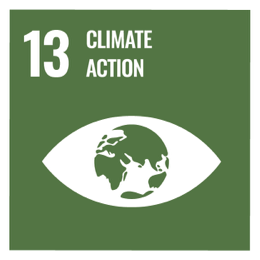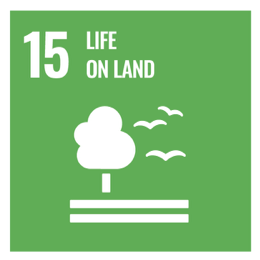Performance Information:
This website is optimised for Safari and Chrome.
Cultural diversity and a sea of islands
The Pacific is a vast and interconnected region. The all-surrounding Pacific ocean connects the numberless islands forming a mega highway transporting people and goods for generations. More than 200 languages are spoken in Remote Oceania making it a vibrant and culturally diverse place. However, the all-connecting highway is about to change. Global climate change is melting the earth's ice deposits, causing global sea levels to rise.
The goal of this website is to investigate the impact of sea level rise on Pacific islands in the context of the 13th and 15th Sustainable Development Goals (SDG) of the United Nations. This project focuses on sea level rise as a direct result of climate change, which is addressed by the 13th SDG. It is one of the Pacific Islands' most pressing problems. Sea levels will rise by 70 meters if all of the Earth's ice melts. Given that the majority of Pacific islands are relatively flat, this implies that they will submerge. The terrestrial ecosystems in this region, which are to be protected under the 15th SDG, would be affected greatly.
Research Question
Aside from the tragedy and suffering caused by the islands' disappearance, the loss of cultural diversity is also noteworthy. The linguistic diversity of the thousands of islands is enormous. The extinction of many islands threatens the survival of the languages spoken on them. In order to capture all relevant details from the presented problem above, we framed the following research question:
“What are the expected topographical and linguistical changes in remote Oceania due to climate change in the following centuries?”
Through the interactive map provided, this website gives insight into the potential impact of sea level rise on Pacific islands and the existence of the languages spoken there.
Findings
Our modelling shows that there are a lot of endangered with no submerged islands independent of the RCP-level by 2050 (218 islands endangered for RCP2.6 and 275 for RCP8.5). By the year 2100 most of the endangered islands are submerged (311 islands) because of almost 1 meter of sea level rise according to the RCP8.5 scenario. As for the RCP2.6 scenario, 228 island are submerged and 70 islands are endangered according to the model, which is just slightly better compared to the RCP8.5 scenario. As it can be seen in the static plot the pathways of the RCP2.6 and RCP8.5 start to diverge form each other after the year 2100. In the years 2200 and 2300 the two RCP-scenarios start to show a stark difference between submerged islands. In the RCP8.5 the sea level has risen almost 4 meters and more than 1200 islands are now submerged. The RCP2.6 results are much less intense. The sea level has risen about 0.8 meter and only 312 islands are submerged. Regarding languages, in both RCP-scenarios almost the same result emerges. 2 or rather 3 of 233 languages are lost in the modelled span of 300 years. The only difference is that in RCP8.5 the languages are lost more quickly compared to RCP2.6.
If we manually adjust the sea level, we see the potential of sea level rise, which is possible when all ice deposits have melted. This would equate to a sea level rise of approximately 70 meters. Playing with that scale reveals that most of the islands are submerged by 70 meters of sea level rise. Only about 15% of all the islands are higher than 70 meters. Regarding languages, 34 of 233 languages are lost if the sea level rises 70 meters. The loss of languages is evenly distributed over the interval of 70 metres of sea level rise.
In summary, Remote Oceania will be strongly affected by climate change, with around 300 to 1200 islands submerging in the next 300 years due to sea level rise. The impact on linguistic diversity, however, has been overestimated. Although many islands would sink overall, enough islands will remain safe that linguistic diversity will hardly be affected. This is a result that is certainly reinforced by the simplified modelling. A language area only disappears from our map when all the islands it contains have perished. If, for example, a language area has 100 islands, 99 of which are submerged and one of which is only one metre above sea level, our model considers this language area as still present, which is of course far from any reality.
The research question can therefore be answered with regard to the topographical changes in such a way that these changes will be enormous and many islands will be strongly influenced by climate change. The linguistic changes due to climate change are very small, although there is a great deal of uncertainty in this statement.

